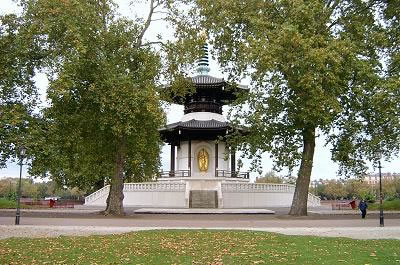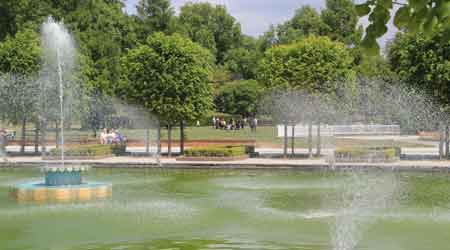Prestigious Green Flag Continues To Fly Over Battersea Park
As well as the award there are new features and improvements in the pipeline

Battersea Park has again been confirmed as one of the best green open spaces in the country after successfully retaining its coveted Green Flag award.
Tthe award from leading environmental charity Keep Britain Tidy recognises the best parks and green spaces across the UK.
A Green Flag is confirmation that Battersea Park maintains the highest environmental standards, is very well maintained and has excellent visitor facilities.
International Green Flag Award scheme manager Paul Todd said, “We are delighted to be celebrating another record-breaking year for the Green Flag Award scheme.
“Each flag is a celebration of the thousands of staff and volunteers who work tirelessly to maintain the high standards demanded by the Green Flag Award. The success of the scheme, especially in these challenging times, demonstrates just how much parks matter to people.”
Battersea Park's many attractions include a boating lake, sports courts, an Olympic quality running track, bike hire, a popular children's zoo, lakeside restaurant, Victorian bandstand, tennis courts, all-weather floodlit sports pitches and the impressive Peace Pagoda - a unique London landmark complete with gold-coloured Buddhas overlooking the River Thames.

The award comes just days after the park opened a new children’s playground. The £150,000 playground is located just off East Carriage Drive near the café and boating lake and is suitable for children up to the age of 12.
It has been created as part of a planned programme of investment in the park worth around £840,000.
The lion’s share of the funding was generated as a direct result of staging the Formula E electric motor car racing championships in the park for two years. This raised £500,000 for park improvements, as well as around £2.5m for other frontline council services in Wandsworth.
A further £250,000 has been levied from the developers of the neighbouring Battersea Wharf and Chelsea Bridge Wharf housing schemes. Other funding has been pledged by local amenity group the Friends of Battersea Park.
As well as the brand new playground, a new pedestrian entrance to the park has been created between Chelsea and Rosary Gates, with associated landscaping, connecting with existing paths near the Millennium Arena.
Other improvements in the pipeline for Battersea Park include:
A new garden - The Promontory is currently a closed area 50m east of Albert Bridge which projects about 12m into the river. A generous contribution from The Friends of Battersea Park topped up by funding from existing parks budgets will be used to help create a new £95,000 landscaped garden.
Cascade fountain feasibility and restoration project – The cascades are an important and prominent historic landscape feature, but over time have deteriorated and can no longer be used without causing significant additional damage. A total of £160,000 has been pledged towards carrying out a feasibility study into their complete restoration and to help fund their refurbishment.
Restoration of seating shelters – It is proposed to spend £80,000 on restoring three historic shelters with new seating and substantial structural and decorative renovation.
Other improvement projects are now being drawn up to utilise the remaining funds, which amount to approximately £260,000.
History of Battersea Park
Battersea Park covers some 200 acres and was opened by Queen Victoria in March 1858 having been created out of fields and marshland to create a place of healthy recreation for the huge numbers of people who had moved to London during the Industrial Revolution.
It was designed by the Victorian engineer James Pennethorne and the planting was overseen by the adventurer John Gibson, who scoured the globe for exotic plants to display in the park's famous sub-tropical garden, the first of its kind to open to the British public.
Throughout the 20th century, much of the original horticultural diversity was lost, largely due to the impact of two world wars when the park was not only used for allotments and pig farming, but also for troop dispersal areas, bomb shelters and anti-aircraft gun emplacements. The park also suffered extensive bomb damage from Luftwaffe bombers on missions to disable neighbouring Battersea Power Station, as well as being hit by a V1 rocket.
In 1951 the park was chosen as the home for the Festival of Britain Pleasure Gardens, designed by Russell Page. A permanent funfair was also included, which for many years proved popular with people of all ages, but which eventually closed in 1974.
The park became rundown in the 1970s and '80s and it was eventually taken over by Wandsworth Council in 1986 when the Greater London Council was abolished. Since then millions of pounds have been spent transforming it into today’s popular and much-loved open space.
July 20, 2017